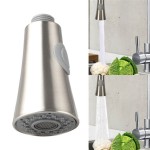Linoleum kitchen flooring is a popular choice for many homeowners due to its attractive, durable, and easy-to-clean features. Whether you’re looking to install a new kitchen floor or upgrade an existing one, linoleum is an ideal choice. Read on to learn more about linoleum kitchen flooring and how it can enhance your home’s décor and functionality.
Types of Linoleum Kitchen Flooring
Linoleum kitchen flooring comes in a variety of styles, colors, and textures. The most common types of linoleum kitchen flooring are:
- Sheet linoleum: Sheet linoleum is the most common type of linoleum kitchen flooring. It comes in large rolls that are easy to install and can be cut to fit the desired area. Sheet linoleum is also the least expensive type of linoleum kitchen flooring.
- Vinyl tile: Vinyl tile is a popular choice for kitchen flooring due to its durability and easy installation. Vinyl tile is available in a variety of colors and patterns, making it easy to customize your kitchen floor to your exact specifications.
- Vinyl plank: Vinyl plank is a popular choice for kitchen flooring due to its popularity and ease of installation. Vinyl plank is available in a variety of colors and styles, making it easy to customize your kitchen floor.
Benefits of Linoleum Kitchen Flooring
Linoleum kitchen flooring has many benefits that make it an ideal choice for any kitchen. Some of the benefits of linoleum kitchen flooring include:
- Durability: Linoleum kitchen flooring is highly durable and can withstand high levels of foot traffic. It is also resistant to scratches, stains, and moisture.
- Easy to clean: Linoleum kitchen flooring is easy to clean and maintain. It is also resistant to water and mildew, making it ideal for kitchens with high levels of moisture.
- Cost effective: Linoleum kitchen flooring is a cost-effective option for many homeowners. It is available in a wide range of prices, making it an affordable option for any budget.
- Attractive: Linoleum kitchen flooring is available in a variety of colors, patterns, and textures, making it easy to customize your kitchen floor to your exact specifications.
How to Install Linoleum Kitchen Flooring
Installing linoleum kitchen flooring is relatively easy and can be done by most homeowners. Before you begin, make sure to measure the room and purchase enough linoleum to cover the entire area. Here are the steps to follow for installing linoleum kitchen flooring:
- Prepare the floor: Before you begin, make sure to remove any existing flooring and prepare the subfloor. Make sure the subfloor is clean, dry, and free of debris.
- Install the underlayment: Before you install the linoleum, you will need to install an underlayment to provide cushioning and soundproofing. Make sure to follow the manufacturer’s instructions for the best results.
- Install the linoleum: Begin installing the linoleum in one corner of the room and work your way out. Make sure to use the proper tools and techniques for cutting and joining the linoleum.
- Finish the edges: After the linoleum has been installed, you will need to finish the edges and corners. This can be done with a rubber trim or other edge finishing materials.
Installing linoleum kitchen flooring is a relatively simple process that can be completed by most homeowners. With the right tools and materials, you can have a beautiful and durable linoleum kitchen floor in no time.










:max_bytes(150000):strip_icc()/easy-install-plank-vinyl-flooring-1822808-10-6cfb7acfac434155a53e0ef80bfbc825.jpg)




Related Posts








